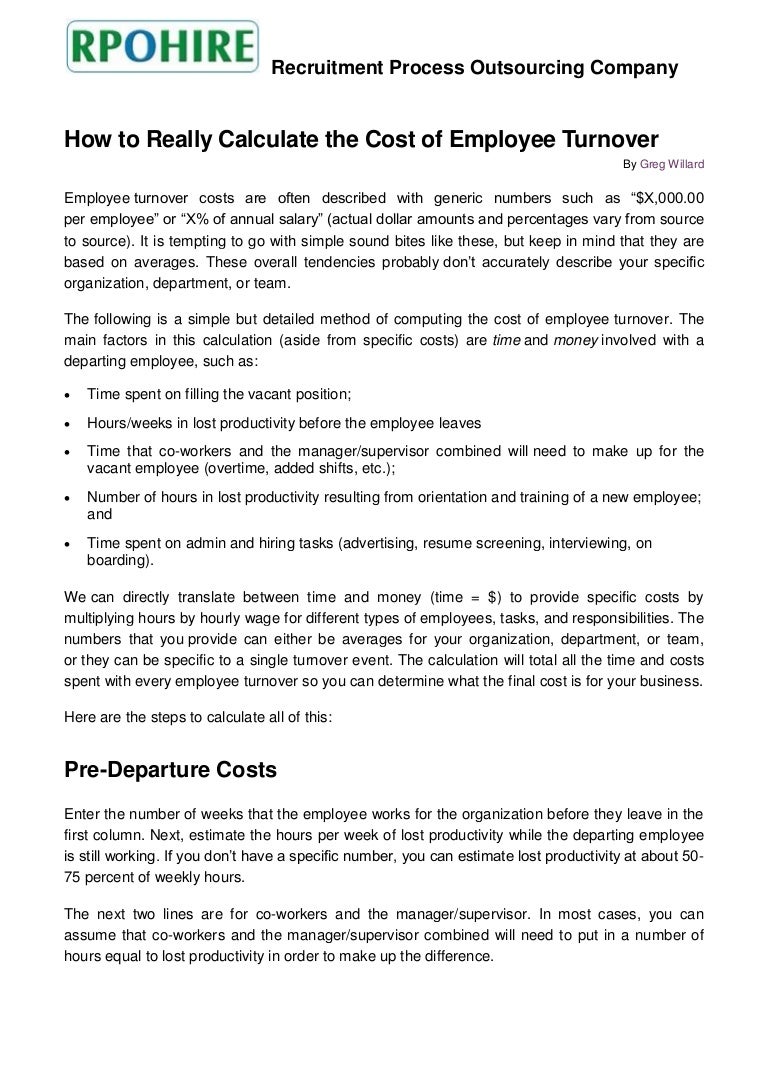


This typically results in many employees being laid off, through no fault of their own. Layoffs usually occur because companies want to save money or restructure. Common reasons for involuntary turnover include the following: Being laid off This type of turnover is when a company asks an employee to leave. Related: 15 Ways to Improve Employee Retention at Your Workplace Involuntary turnover Changing a career path can lead to decisions about accepting a promotion to a more managerial role, pivoting industries or going back to school to pursue higher education. This feeling might be a sign for an employee to leave the organisation to have a healthy work-life balance.Ĭhanging career paths: It's common for employees to seek change during the course of their careers. Long hours: Some employees experience a feeling of burnout with jobs that have a demanding schedule and require long hours. Lack of job satisfaction: After a long period of time, some employees might encounter an instance where they have simply lost the satisfaction they once had for their current position. Another employer might be able to provide more benefits and pay or may just be a better match in terms of values. Here are a few common reasons why an employee might leave their jobs voluntarily:Īccepting a job with another company: An employee may have found better options elsewhere that match their desired career path. If you're a manager, having exit surveys in place for this type of employee turnover can help you better understand the causes of voluntary turnover within a company. Employees most commonly put in a two-week notice before they resign from their job, but some employees don't and may simply stop showing up or leave their workplace after resigning and not returning. This type of employee turnover is when an employee leaves a company by their own choice. There are several types of turnover that characterise employment departures. Here's an example of the last calculation: Consider referring to the percentage to determine how a company performed during the year. Simply take the quotient of the division in the previous step and then multiply it by 100. The last step in the equation calculates your rate of annual employee turnover. Here's a representation of what the equation looks like:ģ0 / 185 = 0.16 4. You divide 30 by 185 to produce a result.

Using the example in the previous step, suppose 30 professionals left during the year and 185 is your average. You can divide the number of resigned employees by the annual average. Once you've determined the necessary figures, you can enter them into the equation. Divide the number of employees who left by the annual average Consider deciding whether you want to count all the employees who stopped working at the company, including both involuntary and voluntary resignations. Ask them how many employees left the company during the year. Enter the number of employees who left the companyĬonsult with a human resources manager. Here's an example:Įmployees size for January 1, 2022: 200 employees, including the 30 who leftĮmployees size for December 31, 2022: 170 employees, including the 20 the company replacedĢ. You can calculate the annual average by adding both numbers together and then dividing the total by two. For example, if the company began the year with 200 employees and 30 of them resigned, but the company replaced 20 of them, then your final figure is 190. Then, count the number of employees a company has at the end of the month, including the ones the company has replaced. Identify the number of employees for a yearīefore you calculate a company's employee turnover, determine first the number of employees at the beginning of the year, including those who may have left since then. Here are the steps to calculate annual employee turnover: 1.
#Calculate employee turnover how to#
Related: What Is Staff Turnover? (Plus How to Improve Turnover Rates) How to calculate annual employee turnover When you're looking for a new job, you may want to find out the employee turnover at the companies you're applying to. This number often reflects the possibility for open jobs that become available for professionals looking for work. Turnover rate is a measurement used to determine how many employees leave an organisation during a set period of time. In this article, we explain what turnover rate is, discuss its different types and provide the steps you can take to calculate it. Learning what employee turnover rate is can help you understand why employees leave and find ways to improve retention. Employee turnover says a lot about an organisation, whether it's low or high. Employee turnover refers to the percentage or number of employees who left an organisation within a period of time.


 0 kommentar(er)
0 kommentar(er)
